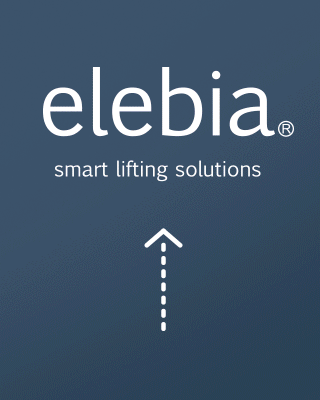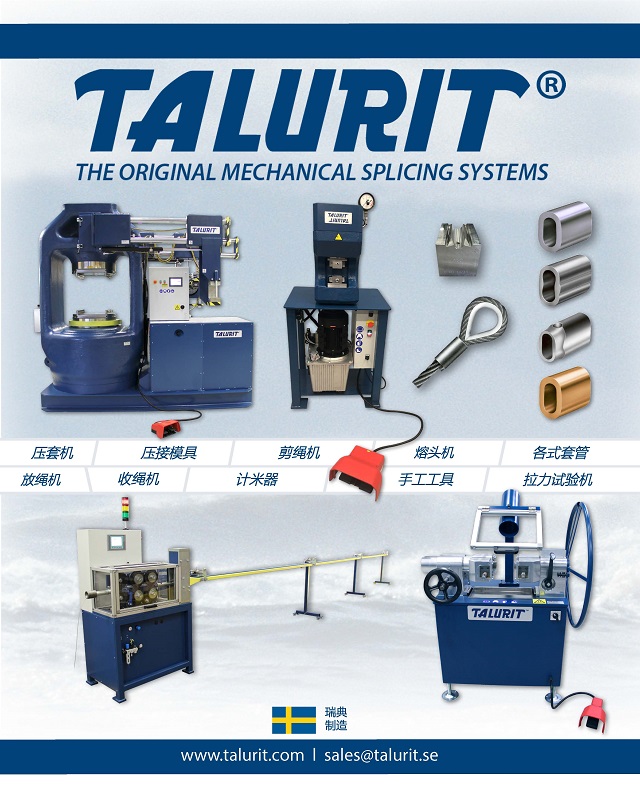by Ben Dobbs, technical manager, LEEA (Lifting Equipment Engineering Association)
 Drawing on the experiences of over 1,000 member companies worldwide, LEEA is well placed to identify common problems and challenges encountered within the global lifting industry. For example, over the past couple of years, a number of these members have voiced concern over the confusion that exists within some organisations as to where responsibility lies for ensuring that lifting equipment is safe to use. Clearly this is fundamental to any safe lifting programme, and many countries will have sector-specific and/or general health and safety legislation that spells out not just what needs to be done, but also who is responsible for making sure it happens. However, alongside any such legal obligations, LEEA would always encourage employers to refer to the best practice set out in the association’s own Technical Requirements. This includes the recommendation that three levels of checking are required to establish a high standard of safety for lifting equipment: pre-use checks; routine inspection; thorough examination. Of course, when combined with the equally important process of initial equipment selection, it is almost inevitable that a number of different personnel will be involved. This may go some way to explaining why our members are reporting a degree of uncertainty as to where ultimate responsibility rests. To provide further clarity on the subject, LEEA has recently published a guidance note that outlines all the key roles that contribute to the safety of lifting equipment in service. Specifically, these encompass the duty holder, procurement personnel, lifting equipment examiner, inspector, maintenance personnel and operators. The guidance note also outlines the overall ‘chain of command’. What follows here is a summary of its main points.
Drawing on the experiences of over 1,000 member companies worldwide, LEEA is well placed to identify common problems and challenges encountered within the global lifting industry. For example, over the past couple of years, a number of these members have voiced concern over the confusion that exists within some organisations as to where responsibility lies for ensuring that lifting equipment is safe to use. Clearly this is fundamental to any safe lifting programme, and many countries will have sector-specific and/or general health and safety legislation that spells out not just what needs to be done, but also who is responsible for making sure it happens. However, alongside any such legal obligations, LEEA would always encourage employers to refer to the best practice set out in the association’s own Technical Requirements. This includes the recommendation that three levels of checking are required to establish a high standard of safety for lifting equipment: pre-use checks; routine inspection; thorough examination. Of course, when combined with the equally important process of initial equipment selection, it is almost inevitable that a number of different personnel will be involved. This may go some way to explaining why our members are reporting a degree of uncertainty as to where ultimate responsibility rests. To provide further clarity on the subject, LEEA has recently published a guidance note that outlines all the key roles that contribute to the safety of lifting equipment in service. Specifically, these encompass the duty holder, procurement personnel, lifting equipment examiner, inspector, maintenance personnel and operators. The guidance note also outlines the overall ‘chain of command’. What follows here is a summary of its main points.
The duty holder
The single most important point to stress is that ultimate responsibility for the safety of lifting equipment should always lie with the duty holder, i.e. the person responsible for the lifting equipment. Usually this is the employer or self-employed person. However, it should be emphasised that this is not always the case. In certain circumstances it might be a building owner, the person in charge of the equipment, or a hire company.
Of course, processes such as the selection, inspection, maintenance and thorough examination of lifting equipment are specialist tasks requiring specialist skills. In many cases, the duty holder will not have the expertise necessary to fulfil all of their obligations. If this is the case, it is perfectly acceptable – indeed desirable – for them to delegate to suitably qualified personnel or organisations. But doing so does not absolve them of ultimate responsibility. It simply changes the nature of their accountability. A duty holder who delegates or sub-contracts their legal obligations becomes culpable for ensuring that those undertaking the tasks are suitably qualified, experienced, trained, equipped etc. In other words, that they are competent for the task. Where external organisations are involved, the duty holder must have the procedures in place to vet such competency.
Procurement personnel
Procurement personnel are responsible for selecting equipment best suited to the intended application. This will involve creating a specification that includes not just a full understanding of the equipment involved, but also other relevant factors, such as environmental conditions and the skills of those who will be using the equipment. They will need to identify the minimum performance requirements, reference appropriate safety standards, and choose equipment on its ability to perform safely under all foreseeable conditions, not just the price.
The lifting equipment examiner
LEEA’s Technical Requirements spell out the need for periodic thorough examination of lifting equipment by a ‘competent person’. The competent person is responsible for ensuring that any defects found are reported to the duty holder, with recommendations as to corrective actions required. In turn, the duty holder is then responsible for taking the appropriate action, investigating the root cause, and implementing measures to prevent reoccurrence.
The inspector
The inspector is responsible for interim inspections between thorough examinations. These are determined by the risk assessment, which should identify the critical components and assemblies to be covered by the inspections. The inspector is responsible for monitoring them and ensuring they are replaced before they become dangerous. Records should be kept, and relevant findings reported to the duty holder and competent person. Once again, the duty holder is responsible for ensuring appropriate corrective action is taken.
Maintenance personnel
Maintenance personnel should repair faults: as and when they occur; as requested by the inspector or duty holder; as required by the manufacturer’s literature; in accordance with a planned maintenance regime. Clearly they are responsible for ensuring all these repairs are done effectively, using suitable components. Furthermore, records should be kept in a maintenance log, and made available to the inspector and competent person.
Operators
Operators are responsible for ensuring that they only use lifting equipment for which they have been trained – and do so in accordance with this training and the manufacturer’s literature. In addition, they should undertake pre-use checks of the equipment, and report to the inspection and/or maintenance personnel any obvious signs of damage or changes to the operation that might indicate a defect.
As with so many things in life, ensuring the safety of lifting equipment is almost invariably a matter of teamwork. Equally, when a variety of different people are involved, perhaps encompassing both internal staff and external agencies, there is always a danger of confusion in terms of where individual responsibilities lie. Establishing and maintaining clear lines of communication is therefore likely to require careful attention. Ultimately, even if they are not ‘hands on’ in terms of undertaking all the necessary tasks, it is the duty holder’s responsibility to ensure that everyone is absolutely clear as to their role, and all have the necessary skillset to fulfil it. Compliance with LEEA’s Technical Requirements is a condition of full membership of the association; beyond this, the Technical Requirements also provide an extremely useful reference point for end users of lifting equipment seeking to maintain high standards of professionalism. Additional help can also be found in LEEA’s Code of Practice of Safe Use of Lifting Equipment (COPSULE), along with the association’s extensive collection of guidance notes, which now includes the newly published: ‘Roles and responsibilities for ensuring the continued safety of in-service lifting equipment.’ Readers can find further details on all this documentation at www.leeaint.com .




